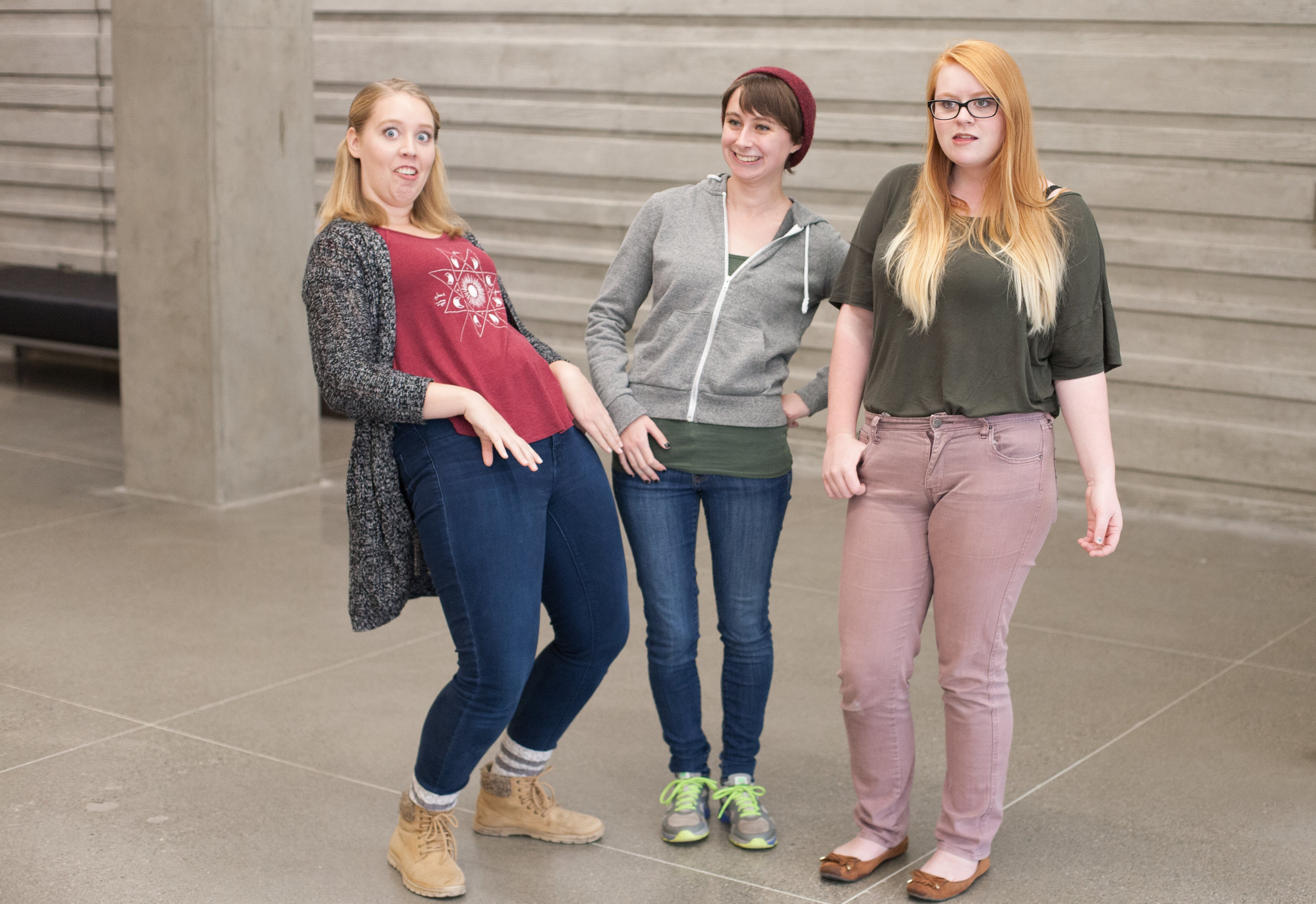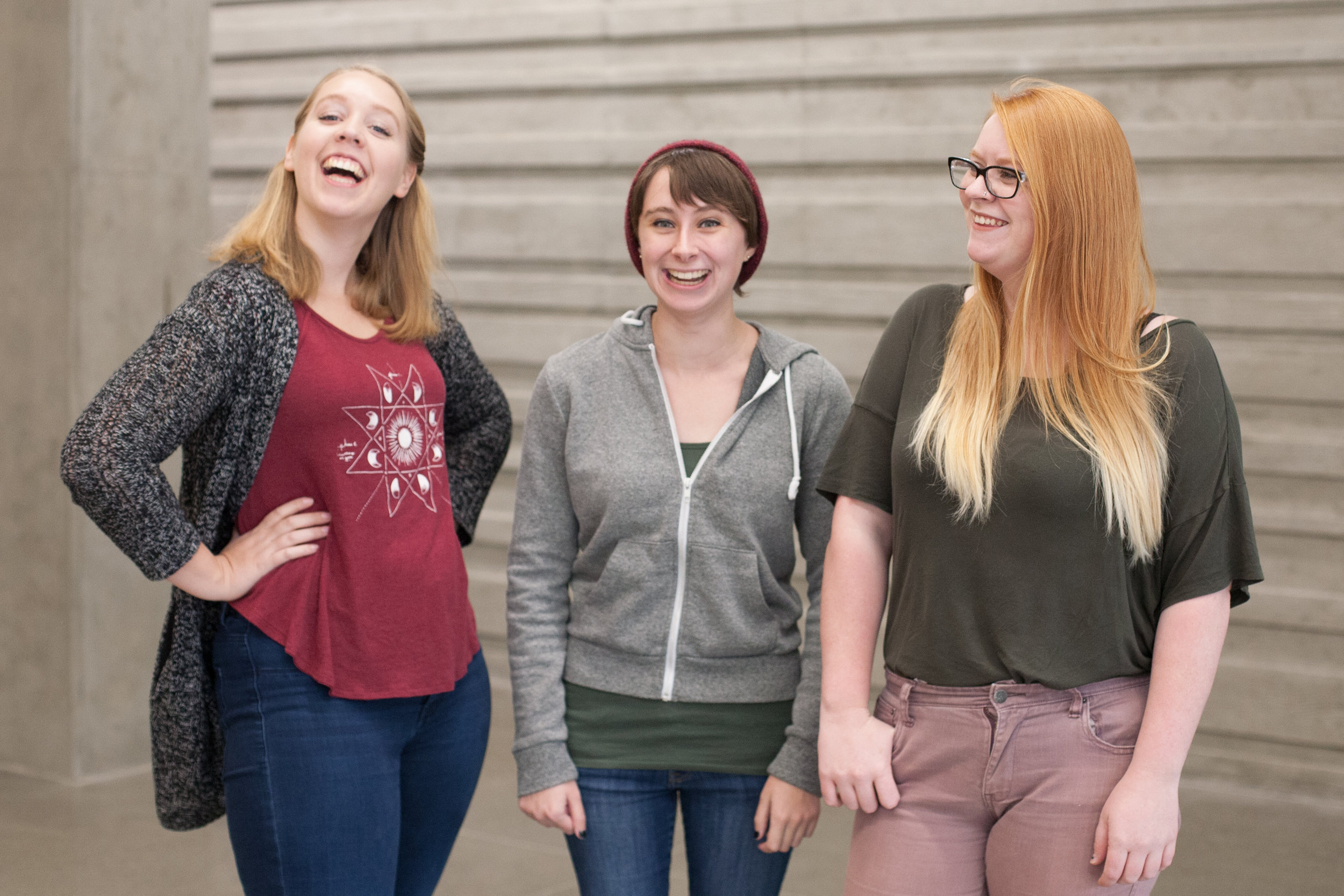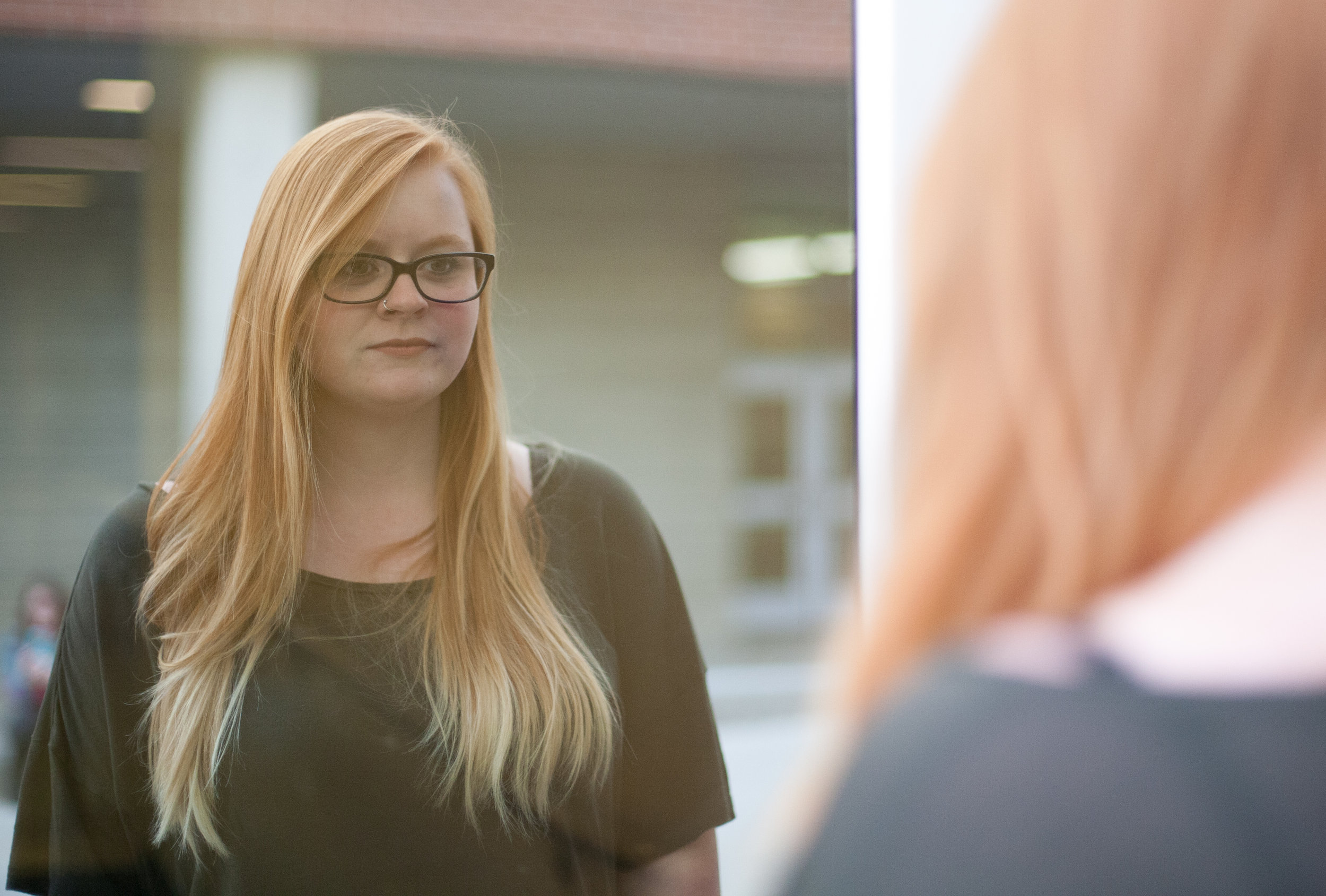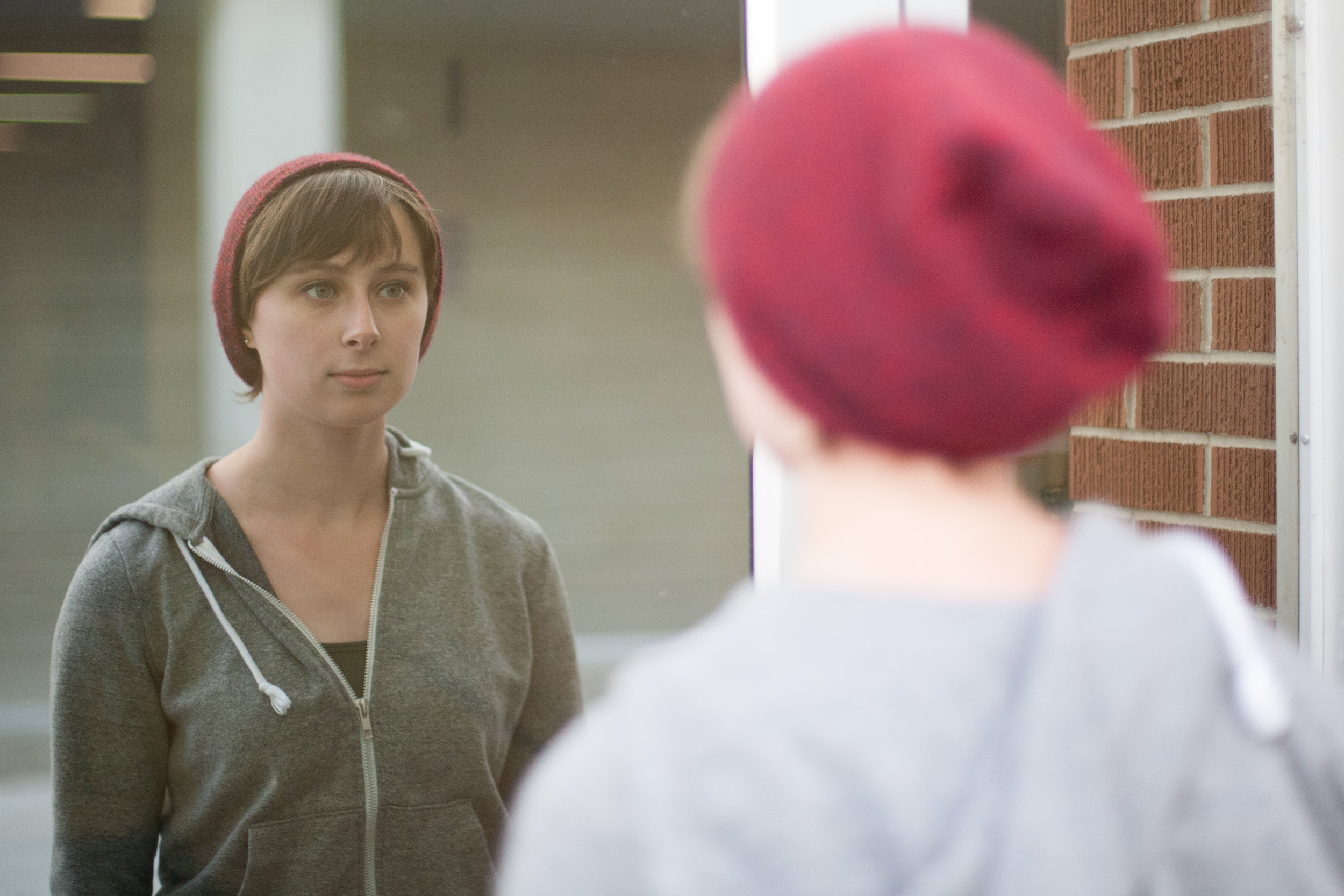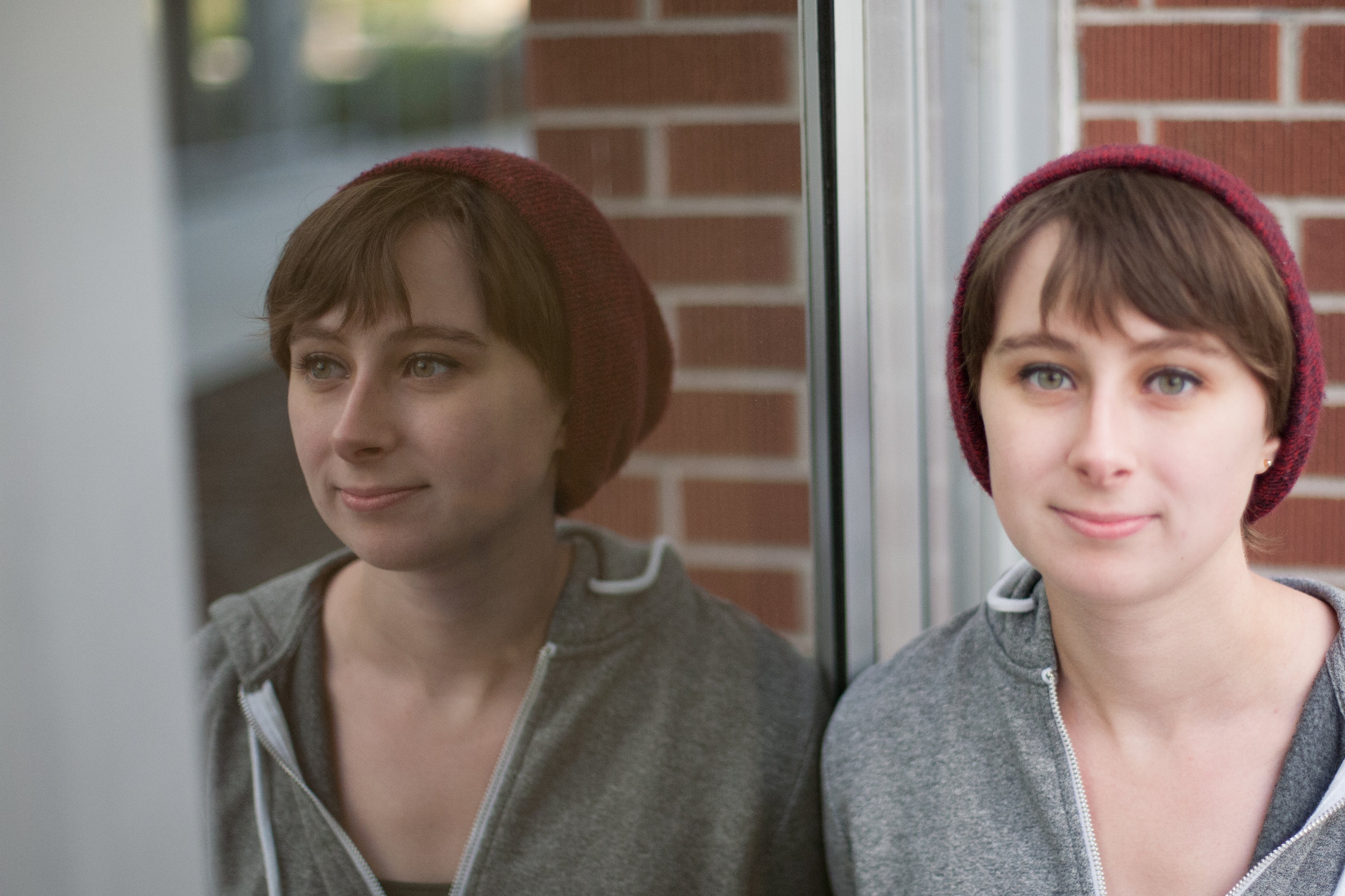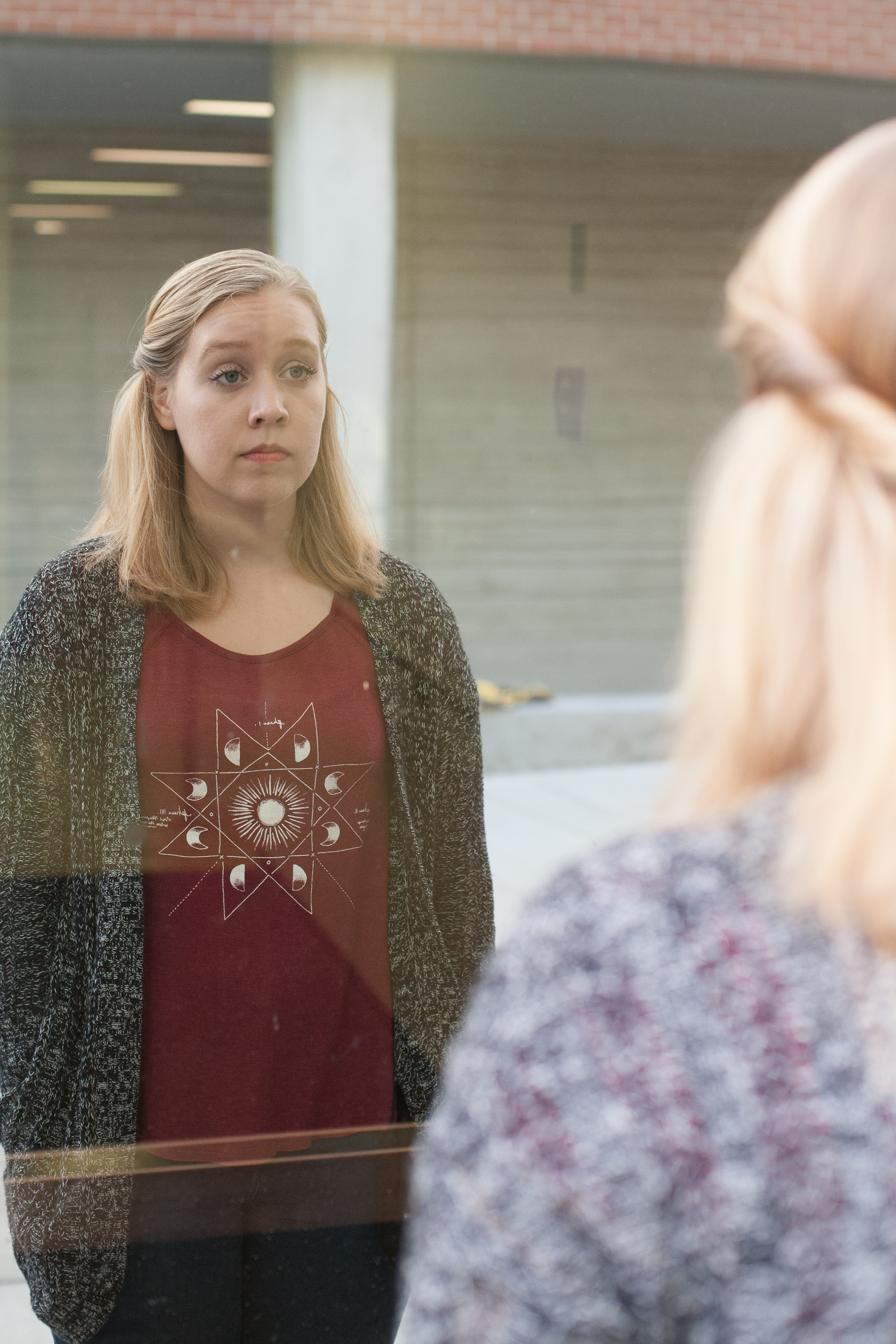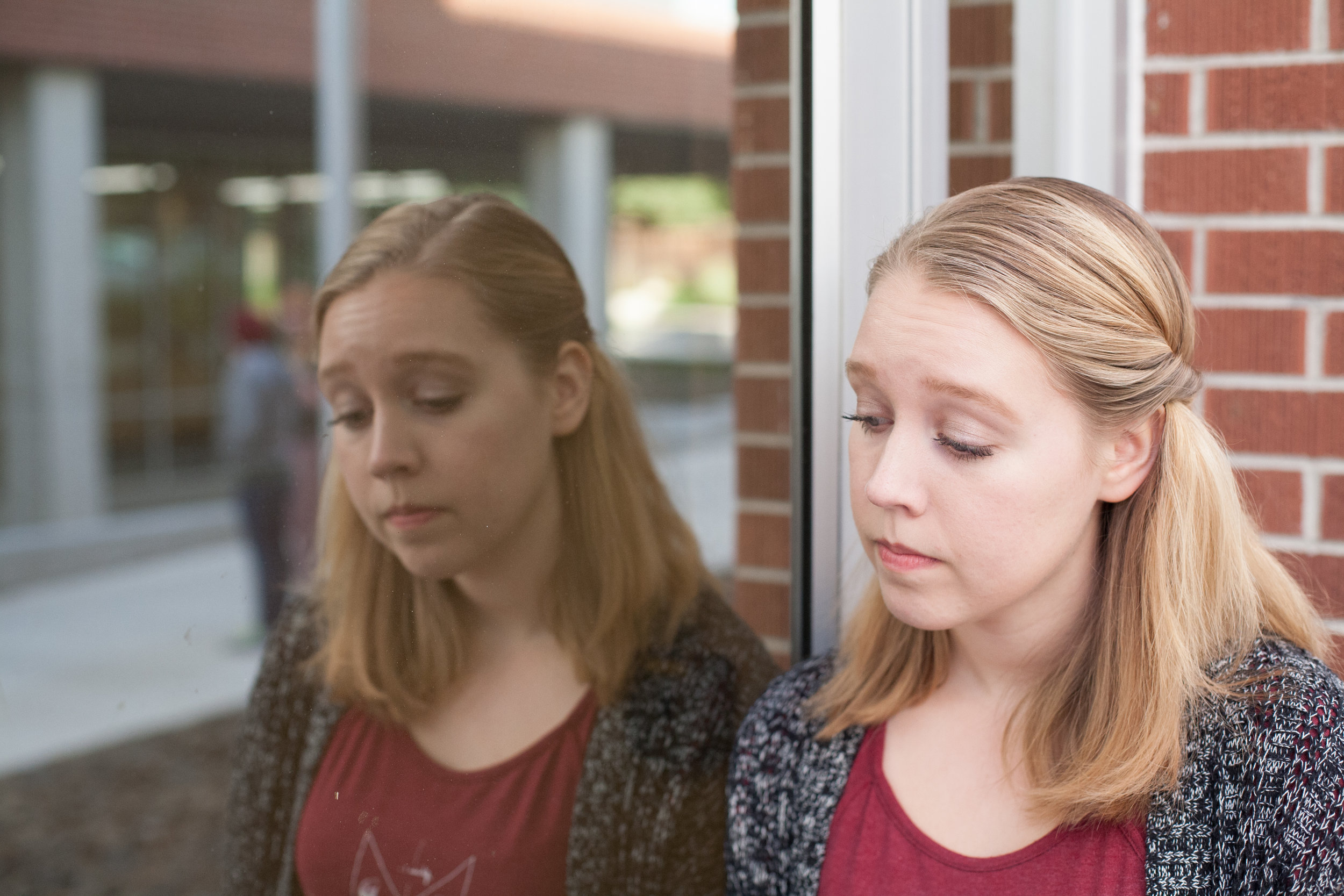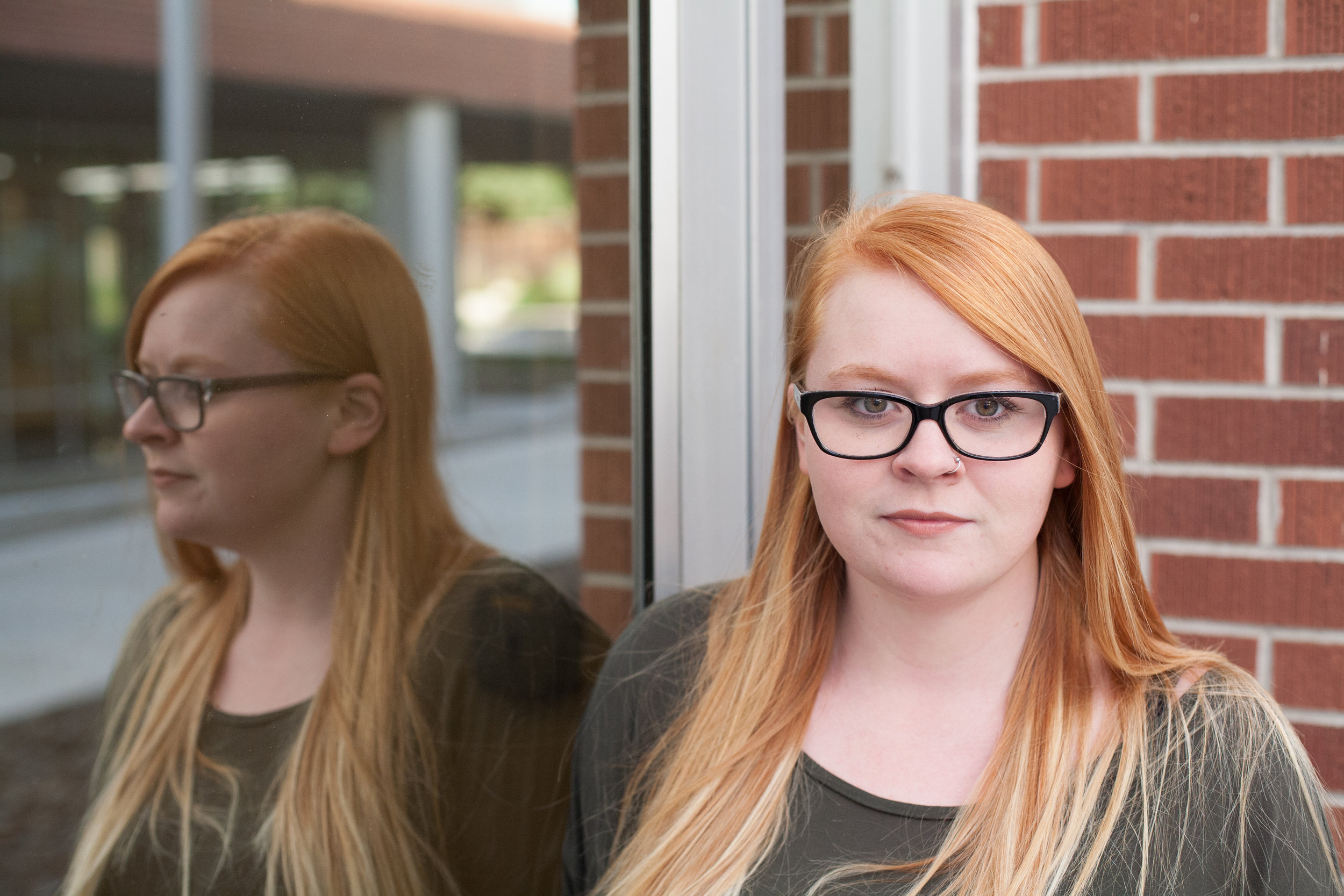Women In Film
Story By: Lexi Phillips // Photos By: Jack Lambert
Finally, women are beginning to make their mark on the film industry. Some of the best films and TV shows today feature complex and diverse female characters -- take, for example, Quantico, Orange is the New Black, and this year’s Ghostbusters remake. Filmmakers are making diversity in film and television a priority, and the results are, for the most part, welcomed with open arms.
When we look at these examples of female badassery on screen, it’s easy to think we’ve got it all figured out. But there are still many more issues that affect things like a woman’s ability to get hired in Hollywood, the roles she is given, and the representation seen by women and girls around the world. These issues are clear from the start of her career and will continue to affect her until changes are made.
A Man’s World
Hollywood, as explained by Central film major Rebecca Starkey, is an “old men’s club,” meaning men with more “traditional” beliefs are in the positions of power. “It’s kind of a self-fulfilling prophecy,” says Starkey, who explains that these men in power often don’t hire women because they believe women can’t make it in Hollywood, “but in actuality it’s because they’re not hiring them-- it’s kind of like a cycle.”
Starkey then alludes to a recent Polygon article about Adult Swim’s reasoning for not hiring women. Currently, the network hires the lowest amount of female writers out of any network, and not for any good (or sensible) reason: creative director and executive vice president Mike Lazzo claimed that women cause conflict in the workplace. Yep, the age-old stereotype. But he also said that women don’t like conflict, and that conflict is the basis of comedy. So, let me read that back to you: according to Lazzo, women cause conflict, but women also don’t like conflict. Perfectly reasonable.
In reality, there is no good reason for not hiring women. In fact, according to a recent study conducted by San Diego State University’s Center for the Study of Women in Television & Film, programs with at least one female creator and/or executive producer are more likely to hire a higher number of females in other important behind-the-scenes roles-- in other words, more women in power means more women, period.
“Of course you want the most qualified people,” says Central film professor Maria Sanders, “but we need to be aware of our biases.”
Of course, it’s not all sunshine and rainbows for women once they get into the business, either: “There are some distinct differences in how women and men are treated in the industry,” says Central film major Jocelyn Waite, who brings up an instance at her job in Housing Student Media in which a man associated with their current project addressed coworker Evan Catlin (who was present for the interview) about the job they were doing, while completely ignoring Waite. “He didn’t talk to me, he only talked to [Catlin] even though we were both on that project, and he knew we were both on that project because he had met us both before to talk about that project,” Waite recalls.
Catlin adds that he sees this a lot when working with Waite: “I’ve noticed it, and I’ve never said anything ... I’ve actually tried to include you-- when I notice it, I’m like, ‘What do you think?’ you know? But I’m sorry.”
Central film major Bekah Gehrke says she sees this often as well with her involvement in both student and professional productions, and that it doesn’t matter whether the woman is more qualified or not-- the man is often viewed as more capable.
Representation Matters
When thinking about sexism in film, we often pay more attention to what we see on the screen-- rightly so. Not only is representation important in that it gives jobs to women who deserve them, but it also has a major effect on viewers, both male and female.
Actress Jessica Marie Garcia (Liv and Maddie) explains how her image affects her work: "Would I work more if I was a size zero? Maybe … There are not many people writing for women who look like me. I'm not the cute blonde you can't wait to take to the dance; I'm her friend that gives her a shoulder to cry on, and some witty banter about my lack of romance. I probably something in every scene … I've been really lucky, though. I have been steadily working for almost a decade now, and that's not a common story."
“I feel like it’s very important for young girls to see themselves represented on screen in a way they can relate to, and to see them doing more parts than just the girlfriend or the dorky best friend,” says Waite. “Like, to see them take on more roles where they’re like, fleshed out and actually have a backstory and goals.”
"There are still too many films being made with up to eight leading men and one token femme fatale," says Garcia. "Even when we make the female the 'badass' in the movie, she's still in a skintight cat suit … I'm all for women owning their sexuality and showing it off, I just would like some variety in my leading ladies."
A recent study examining the top 100 films of 2015 found that only 33% of speaking characters were female, which includes characters who were unnamed but still had lines. This means that the movies young girls are watching are often putting women on the sidelines, almost treating them as secondary to men-- not a good message to send out.
The same study found that in the parts women were playing, they were often portrayed as younger, were more likely to have a known marital status, and were less likely to be seen working or even have an identifiable occupation than their male counterparts. This, of course, plays off of the societal stereotypes that a woman is more valuable or desirable when she’s younger, and that her family or relationships are more important than her job.
This likely comes from the fact that 89% of the writers of these film were men. “Most movies that come out of Hollywood-- their [target] audience is male, and so we have men writing for men,” explains Gehrke.
“I like to think of film as accessible to everybody,” adds Starkey, “like, everybody watches movies. So I think it’s really important to have that representation and that diversity, because if we think that film is for everyone, and then we only show one demographic, it really puts people in a box.”
While lack of representation isolates women and young girls, accurate and diverse representation frees them-- Ghostbusters (2016) is a prime example.
“What I appreciated about it,” explains Waite, “was the scene near the end where all fourfemale characters are fighting the ghosts, and they’re, like, total badasses. And like, they really own what they’re doing; you don’t see that a lot. Maybe you’ll have like, one female protagonist who gets to fight with the guys, but to have all the protagonists be women and to have them stand up for what they believe in and to fight and not need someone’s help is really inspiring. It was nice just for me and for, I feel like, a lot of girls just to see that portrayed on screen.”
Starkey seems to agree with this, bringing up a recent image gone viral which shows young girls dressed as Ghostbusters posing next to the film’s stars. “It’s saying that a little girl can be anything, not just a princess or whatever,” she says.
Waite points out that diversity in film isn’t just important for viewers, it’s demanded by them. “Luke Cage,” she adds, “which stars a man of color in a prominent, important role, was so popular that it crashed Netflix when it aired. It’s obvious there is a demand to see these roles, and to see them done well. Like, no half-assed shit to pander to audiences … If you’re going to do it, do it well. Do it for the people who need to see themselves on screen.”
From the Start
These types of incidences don’t only occur in the big league-- as a matter of fact, they can exist in any film environment, including Central’s film program.
“Women have to be almost even more qualified than men for the same [consideration],” says Starkey, adding that in many of the higher-level classes she’s taken, “there’s only about four girls in those classes, and like, tons of guys.”
“I don’t know if that’s because of the environment that they’re in, or if that’s an [internal] sort of … bias towards ourselves,” Sanders comments. To help this, she tries to encourage her female students to not give in to their fears, and to push them to figure out “what they're into and to pursue those things.”
Starkey also pointed out that in screenwriting classes, the scripts written by students often featured male protagonists and male characters, and that “there’s only one woman, usually she has a minor role and she’s kind of stereotypically written.”
Speaking from personal experience, this phenomenon can be incredibly isolating, especially in a space with very few women. You become the “token girl” who reads, sometimes, for multiple female characters in one script, many of which are very similar and have relatively minor roles. Meanwhile, the men in the class get to read for a multitude of characters, which often include the major characters.
Sanders sees this often: “It’s never been 50/50, in my recollection … in the scripts being written where there’s half women [characters], half men [characters]. That’s never happened, as I recall.”
So, if it can be assumed that this behavior only multiplies once these students arrive in the industry, what can we do to nip it in the bud?
“In the writing classes, I try to remember to emphasize working toward an even number of male and female protagonists-- or male and female characters in general,” explains Sanders, who continues on to say that she tries in general to make sure that her female students share their contributions to discussions; “Sometimes conversations get dominated by male students.”
Finding Solutions
“Fix Hollywood,” jokes Gehrke, when asked what needs to be done to reach gender equality.
Fix Hollywood, indeed. But how? What needs to be done to fix an age-old industry that’s taking baby steps toward a better future?
Start from the beginning: “I think more women should follow their dreams and pursue film careers, whether it be on screen or behind the scenes,” notes Waite, “and not go with more traditional, easier jobs because they feel like there aren’t a lot of women in the industry-- because they can change that.”
Absolutely-- the first step to fighting against sexism is taking the risk and putting yourself out there. Sitting on the sidelines won’t solve anything.
Second, put in the work: prove you can do the job just as well as-- or better than-- any man by “being the best of whatever position you can be,” says Starkey.
Furthermore, don’t let someone tell you that you can’t make it: “Don’t let somebody push you down just because you’re a woman,” advises Gehrke.
Next, women in the industry need to set an example. “Women who are working in Hollywood need to reach out and be role models and be educators,” says Sanders, “because I think part of the problem for girls and young women is if you don’t see women in these roles, it’s hard to picture yourself in that role. So I think the more exposure young women have to women who are working in the industry is a positive thing.”
Furthermore, women need to be allowed their input: "We need more females behind the camera," insists Garcia. "We need women to write for women … If we had writers rooms that were more diverse, I could only imagine what that could do for women, people of color, the LGBTQ community, and those with disabilities. Everyone's story deserves to be told."
Lastly, the men need to do their part
According to Gehrke, the men (and some women, sadly) need to “stop making women unhirable” by perceiving them as stereotypes.
Men working in film must also make their contribution by calling out any instances of sexism that they see -- according to Waite, “It’s going to be a group effort to change the way women are perceived in film.”
Plans for the Future
The best way to fix this issue is to take action yourself; I asked Waite, Starkey, Gehrke, and Garcia what they planned to do in their careers to help.
"I really want toshowcase the talents of women-- particularly women of color, because I feel like they’re never given their just dues," explains Waite. "There’s so many talented women of color out there that aren’t given the opportunities they deserve, simply because higher-ups think that audiences would rather see a pretty, white, blonde woman instead, and if I could increase the diversity in the film industry in any way, then I would be happy."
Starkey plans to be the best she can be in her career; "Just trying to break that glass ceiling and get as high up as [I] can."
Gehrke says she will continue to call people out on sexism, and will continue to apply for jobs, even if they are risky.
As for Garcia, "I have written a couple sketches for an all-female sketch group that I'm in called 'Betch" … I also have aspirations to start my own production company, so that I can produce diverse projects that I care about."





